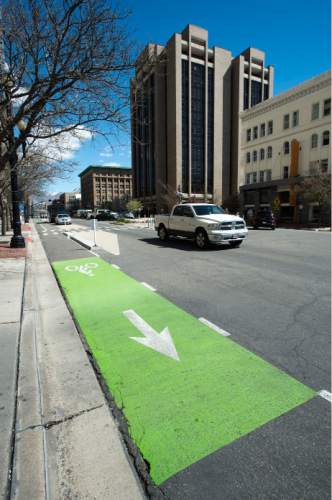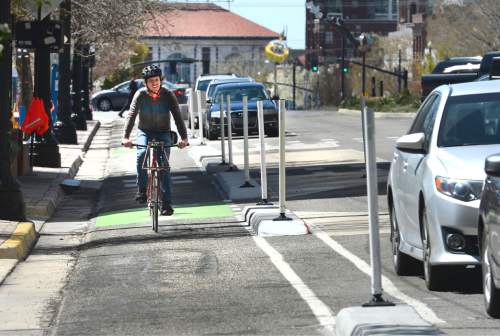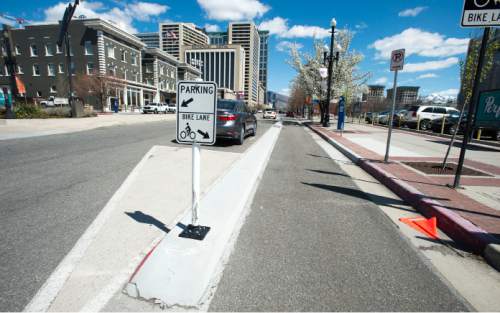This is an archived article that was published on sltrib.com in 2016, and information in the article may be outdated. It is provided only for personal research purposes and may not be reprinted.
The Salt Lake City Fire Department issued a statement Wednesday in an attempt to assure residents and businesses along 300 South that they are safe despite some departures from the International Fire Code.
Fire Marshal Ryan Mellor said that, according to the code, which has been adopted by Salt Lake City, the roadway meets the 20-foot minimum width requirement. But that width includes parking spaces.
A Salt Lake Tribune report published this week did not take into consideration parking slots and found the travel lanes on the road — also called Broadway — to be as narrow as 13 to 14 feet in some places.
"The code says curb to curb," Mellor said Wednesday.
Asked about the problem of cars parked in the spaces in the event of a fire, he said, "It's not ideal and we don't like it, but the street meets the code."
The fire marshal did agree that the roadway in many places does not meet the 26-foot minimum required for ladder trucks used in fires that involve buildings over 30 feet tall.
Nonetheless, Mellor said, ladder-truck crews in practice runs have deployed firetruck stabilizing arms in the most congested areas on 300 South. They accomplished that by placing the stabilizers on the center median. Medians are not measured as roadway width in the fire code.
The 300 South medians were installed in 2001 to 2002 between 300 East and 300 West during the administration of former Mayor Rocky Anderson. They vary in width from 2 feet to 14 feet.
Protected bike lanes, further narrowing the street, were installed in 2014 under the administration of former Mayor Ralph Becker. According to Mellor and Robin Hutcheson, director of transportation for the city, there was some miscommunication between the agencies during the planning of the protected bike lanes.
But long before the bike lanes, fire officials were concerned about firetruck access after the medians were installed, according to a September 2002 city report.
"Several [fire] captains have expressed concern because they might not be able to establish aerial ladder operations outside of a building's collapse zone as quickly as before the center of the street angle parking was installed," the report said. "Operating in congested areas has negative impacts on the efficiency and safety of firefighters."
Despite the narrowing of the street over time, Mellor said, insurance rates most likely will not be impacted. That, he said, is because the Salt Lake City Fire Department has an excellent overall rating, which includes such things as response times, water availability and training.











